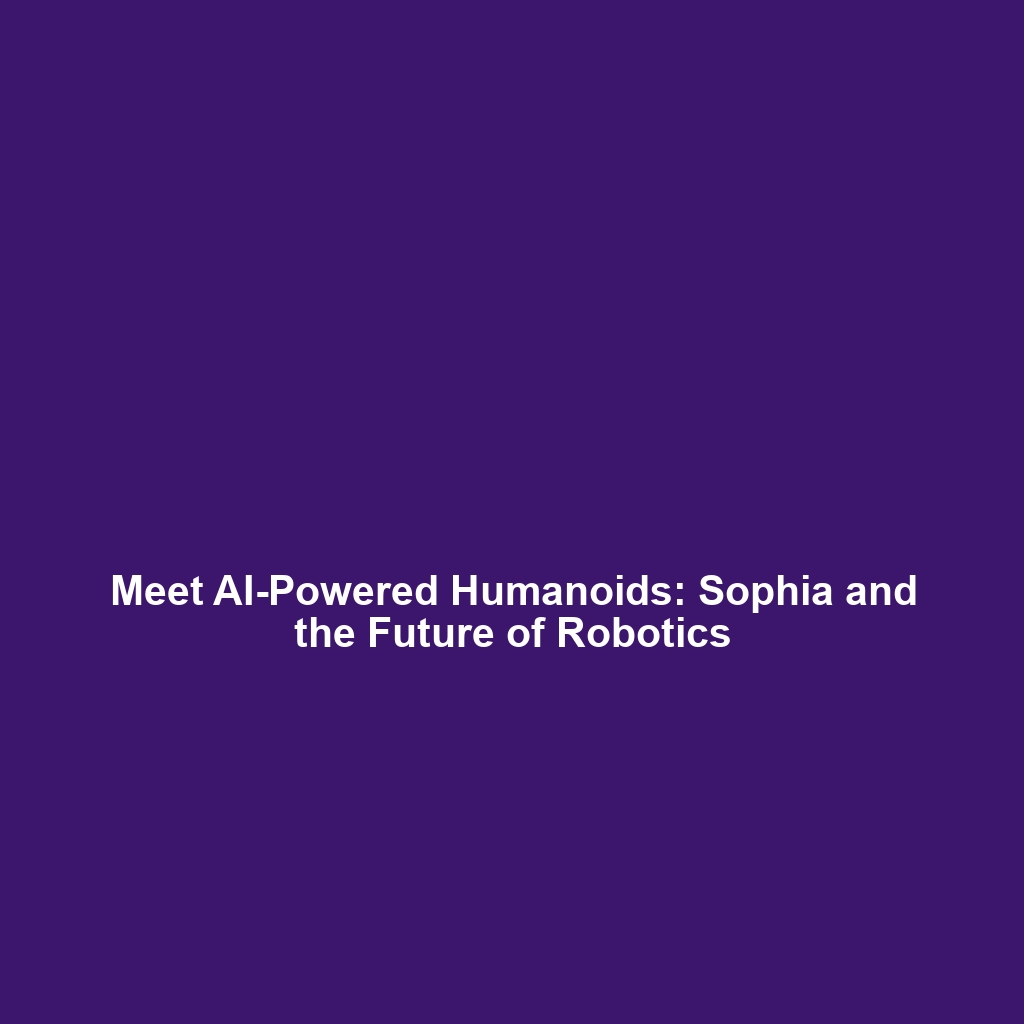Examples of AI-Powered Humanoids like Sophia
Introduction: The rise of AI-powered humanoids, particularly exemplified by robots like Sophia, has redefined the landscape of robotics. These humanoid robots employ advanced conversational AI and facial recognition technologies, enabling them to interact more naturally with humans. Their significance lies not only in their ability to perform tasks but also in their potential to enhance human-robot interaction, making them an integral part of various fields including healthcare, entertainment, and customer service.
Key Concepts of AI-Powered Humanoids
Understanding AI-powered humanoids requires a grasp of core concepts such as:
- Conversational AI: The technology that enables robots like Sophia to understand and generate human-like dialogue.
- Facial Recognition: A system that allows humanoids to identify and respond to human emotions and identities.
- Machine Learning: Algorithms that help these robots improve their interactions and responses over time.
Collectively, these principles position AI-powered humanoids at the forefront of the evolving category of humanoid robots.
Applications and Real-World Uses
The applications of AI-powered humanoids like Sophia extend across various sectors, demonstrating their versatility within humanoid robots. Significant applications include:
- Customer Service: Serving as virtual assistants in hotels and airports, enhancing customer experience.
- Healthcare: Assisting in patient care by providing companionship and support, particularly for the elderly.
- Education: Engaging with students to provide personalized learning experiences and tutoring.
These applications showcase how AI-powered humanoids like Sophia are transforming the landscape of humanoid robots.
Current Challenges
Despite their promising capabilities, the development and implementation of AI-powered humanoids present several challenges:
- Technology Limitations: Current AI systems still struggle with understanding context and subtleties in human communication.
- Ethical Concerns: Issues regarding privacy, surveillance, and the potential for misuse of facial recognition technology.
- Public Acceptance: Many individuals remain skeptical about interacting with humanoid robots.
These challenges in studying and applying AI-powered humanoids underscore issues in the broader category of humanoid robots.
Future Research and Innovations
The future of AI-powered humanoids like Sophia is bright, with numerous innovations on the horizon. Potential developments include:
- Advanced Emotional Intelligence: Enhancing robots’ abilities to interpret and react to human emotions more accurately.
- Improved Interaction Designs: Creating more intuitive interfaces for better user experiences.
- Integration with IoT: Enabling humanoids to interact with other smart devices for seamless automated environments.
These advancements promise to transform AI-powered humanoids and their functionality within the realm of humanoid robots.
Conclusion
In summary, AI-powered humanoids like Sophia are leveraging conversational AI and facial recognition technologies, showcasing immense potential in the field of humanoid robots. As research and innovation continue to evolve, these robots will likely become even more integrated into our daily lives. For further insights into the realm of robotics, consider exploring additional topics on robotics technology or the impact of AI.

Leave a Reply